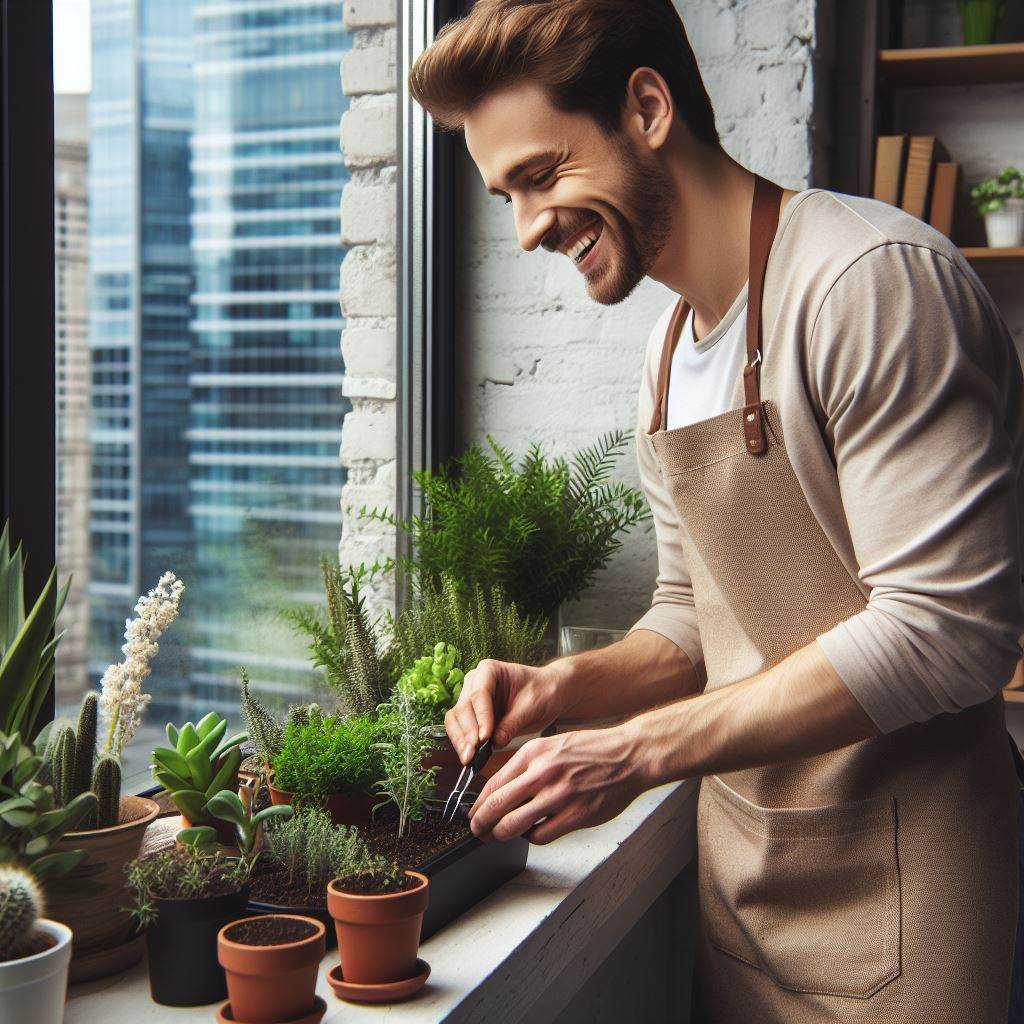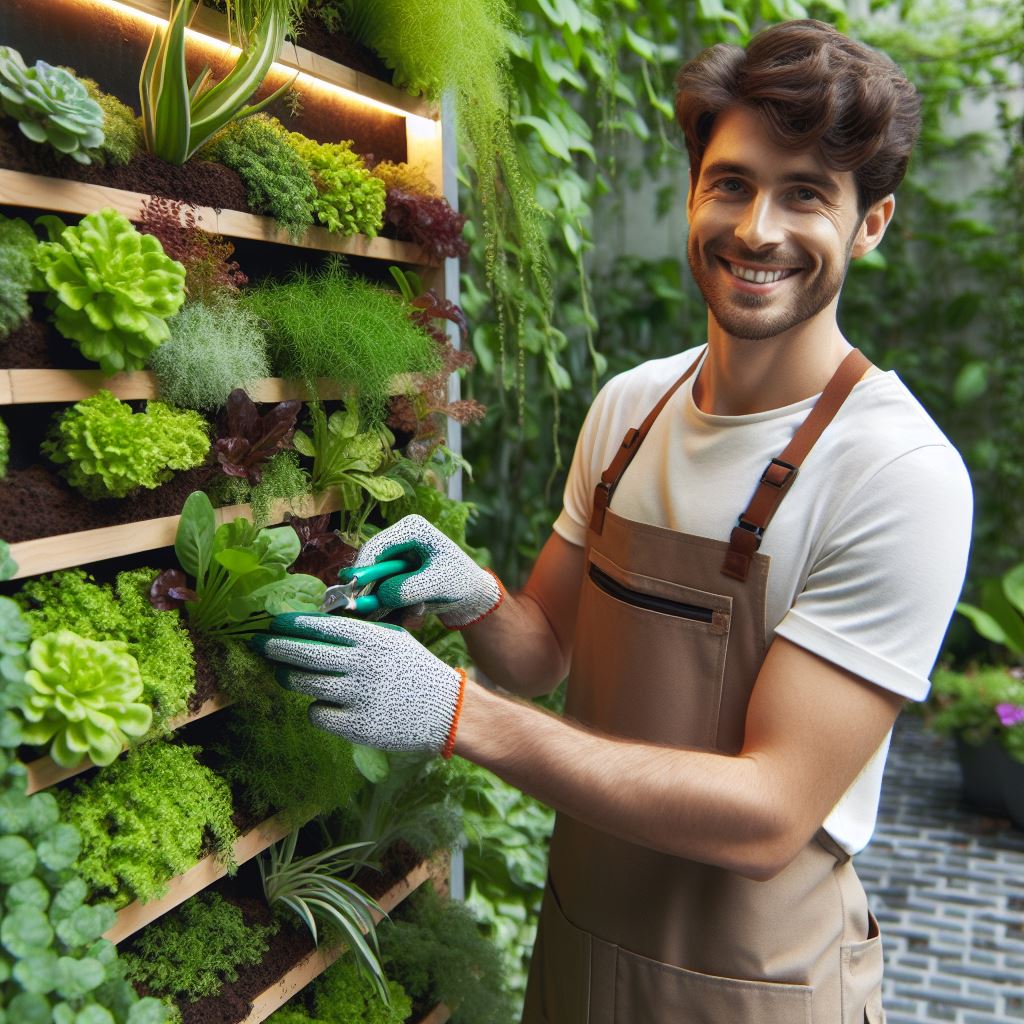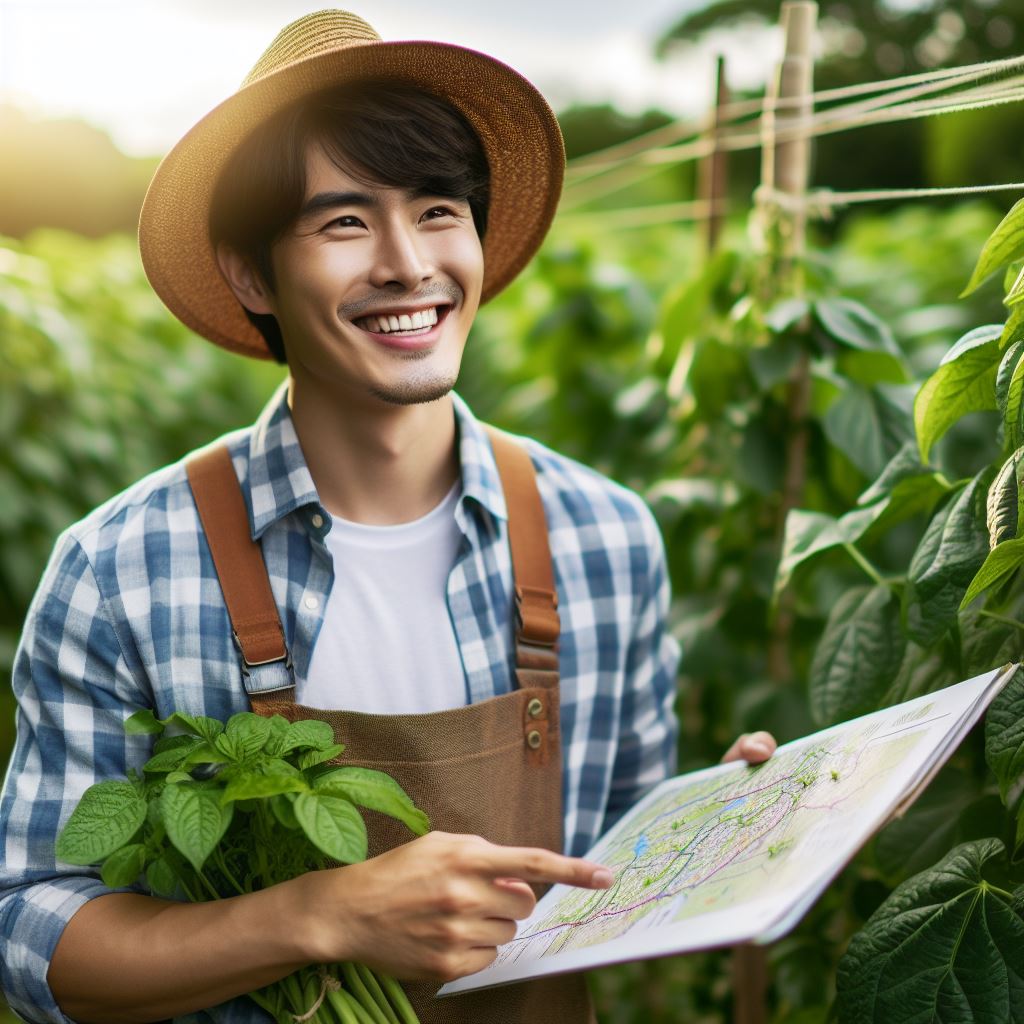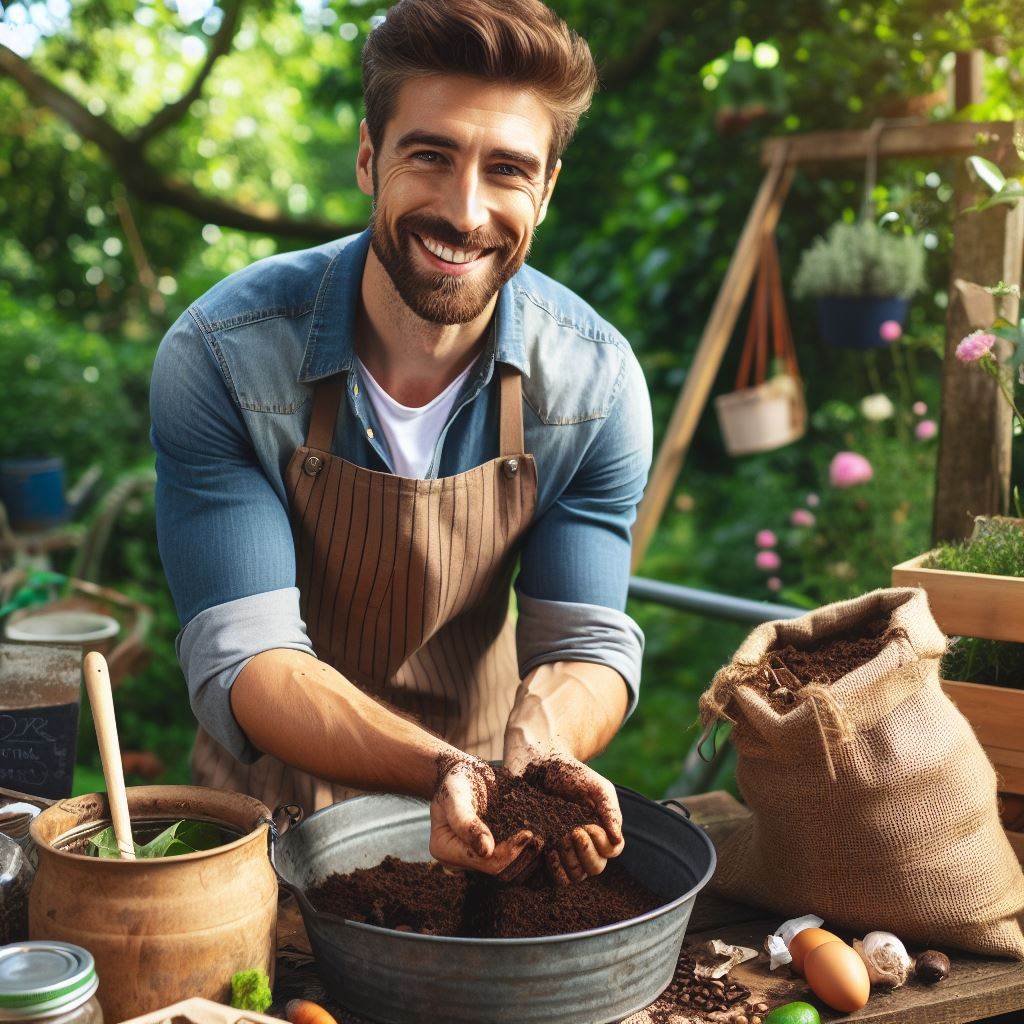Introduction
In the hustle of modern living, cultivating your own oasis becomes a transformative act.
Container gardening, a potent antidote to space constraints, allows everyone, from urban dwellers to suburbanites, to reap the rewards of homegrown bounty.
Importance of Container Gardening
In our concrete jungles, where green patches are scarce, container gardening emerges as a savior.
The allure lies in its adaptability—no backyard required.
Even the tiniest balcony or windowsill can harbor a thriving garden.
Focus of the Blog
Dive into the essence of maximizing harvests within confined spaces.
This blog explores ingenious container ideas, breathing life into the concept of small space, big harvests.
Unearth the secrets to transforming pint-sized pots into abundant sources of fresh produce, fostering a symbiotic relationship between limited space and maximum yield.
Harness the power of containers as your green accomplices, transforming limited square footage into a verdant haven.
Let’s embark on a journey where the size of your garden doesn’t limit the size of your harvest. Small space, meet big possibilities!
Choosing the Right Containers
Consider size and depth of containers
- Make sure the containers are large enough to accommodate the root system of your chosen plants.
- Deep containers are suitable for vegetables with long roots, while shallow ones work well for herbs and flowers.
Select containers with drainage holes
- Proper drainage is crucial for preventing waterlogging and root rot in your plants.
- Look for containers with drainage holes at the bottom to allow excess water to escape.
Various container options like pots, buckets, planters, and hanging baskets
- Pots are versatile and come in various materials such as terracotta, ceramic, or plastic.
- Buckets can be repurposed and are great for growing vegetables like tomatoes or peppers.
- Planters are often used for decorative purposes and can add beauty to outdoor spaces.
- Hanging baskets are ideal for growing trailing plants and flowers, creating vertical interest in small spaces.
Benefits of using self-watering containers
- Self-watering containers have built-in reservoirs that supply water to the plants as needed.
- They reduce the frequency of watering and ensure plants receive consistent moisture.
- These containers are especially helpful for busy individuals or those with limited access to water.
By considering the size and depth of containers, you can provide an optimal environment for your plants’ growth.
Ensuring containers have proper drainage is essential to prevent water-related issues like root rot.
When choosing containers, explore different options like pots, buckets, planters, and hanging baskets to suit your aesthetic preferences and the type of plants you wish to grow.
Moreover, self-watering containers offer convenience and efficiency in maintaining moisture levels, making them a smart choice for busy gardeners.
Read: Urban Chicken Coops: Fresh Eggs Daily
Selecting the Ideal Plants for Small Spaces
Importance of choosing compact and dwarf varieties
- When selecting plants for small spaces, it is important to choose compact and dwarf varieties.
- Compact plants take up less space, allowing you to grow more in a limited area.
- Dwarf varieties are also perfect for small gardens as they have smaller root systems, making them suitable for containers.
- These plant varieties are specially bred to thrive in confined spaces and still produce a bountiful harvest.
- By choosing compact and dwarf varieties, you can maximize your small space without compromising on productivity.
The suitability of vegetables, herbs, flowers, and fruits for container gardening
- Container gardening is a versatile option for growing various types of plants in small spaces.
- Vegetables like lettuce, peppers, and radishes can be grown successfully in containers.
- Herbs such as basil, thyme, and parsley are excellent choices for container gardening.
- Flowers like petunias, marigolds, and pansies can add beauty to your small space.
- Fruits like strawberries, blueberries, and dwarf citrus trees can also be grown in containers.
- Container gardening allows you to create a diverse and dynamic mini garden in any small space.
Specific examples of ideal plants for small spaces such as cherry tomatoes, salad greens, and herbs
- Cherry tomatoes are perfect for small spaces as they can be grown in compact pots or hanging baskets.
- Salad greens like lettuce, spinach, and arugula can be grown in shallow containers or troughs.
- Herbs such as mint, rosemary, and chives can thrive in small pots or vertical gardens.
- Strawberries are excellent candidates for container gardening and can be grown in hanging baskets.
- With careful selection, you can enjoy a variety of fruits, vegetables, herbs, and flowers in your small space.
In short, selecting the ideal plants for small spaces is crucial for successful container gardening.
Emphasize the importance of choosing compact and dwarf varieties that can maximize productivity in limited areas.
Discuss the suitability of various plants including vegetables, herbs, flowers, and fruits, explaining how they can thrive in containers.
Provide specific examples like cherry tomatoes, salad greens, and herbs, highlighting their adaptability to small spaces.
By carefully selecting the right plants, you can create a flourishing container garden, no matter how small your space may be.
Read: DIY Urban Greenhouse: Step-by-Step
Maximizing Space and Plant Yield
Exploring Vertical Gardening Techniques
When it comes to container gardening in small spaces, vertical gardening techniques can be a game-changer.
By using trellises, stakes, and cages, you can make the most of your vertical space and increase your plant yield.
Vertical gardening is a method where plants are trained to grow upwards instead of spreading out horizontally.
It not only maximizes space but also provides adequate support to the plants, allowing them to reach their full growth potential.
Trellises are a popular choice for vertical gardening.
They are vertical structures made of wood or metal that provide a framework for climbing plants.
By attaching the plant stems to the trellis, you can guide their growth upwards, reducing the footprint they take up in your container.
Stakes are another effective vertical gardening technique.
They are tall wooden or metal rods that provide support to individual plants, helping them grow straight and tall.
Staking is commonly used for plants like tomatoes or peppers, which have vines or heavy fruits that need support.
Cages, on the other hand, are similar to trellises but provide more comprehensive support.
They are often used for plants that have a sprawling growth habit, like cucumbers or squash.
Cages help keep the plants contained and prevent them from taking up excessive space.
Companion Planting for Optimal Growth
Companion planting is a gardening technique that involves growing different plants next to each other to benefit from their symbiotic relationships.
By planting compatible crops together, you can optimize plant growth, enhance pest control, and increase overall yield.
Certain plants have natural affinities for each other.
For example, pairing tomatoes with basil is not only aesthetically pleasing but also beneficial.
Basil acts as a natural pest repellent, keeping tomato plants safe from harmful insects.
Transform Your Agribusiness
Unlock your farm's potential with expert advice tailored to your needs. Get actionable steps that drive real results.
Get StartedAnother example is the classic combination of corn, beans, and squash.
This trio, known as the Three Sisters, has been used by Native American peoples for centuries.
Corn provides support for the beans to climb, while the beans enrich the soil with nitrogen.
The sprawling squash plants act as a living mulch, suppressing weeds and conserving moisture.
By practicing companion planting, you can make the most of limited space and create a harmonious garden ecosystem.
Growing Plants in Tiers or Stacking Containers
To further optimize space usage, consider growing plants in tiers or stacking containers.
This technique allows you to grow multiple plants in a small vertical footprint, maximizing your harvest potential.
Tiered planters are designed with multiple levels or shelves to accommodate different plants.
They provide a compact and visually appealing way to grow various crops in a limited area.
You can choose tiered planters made from materials like wood, metal, or plastic, depending on your preference and the aesthetic of your space.
Stacking containers refer to the practice of placing containers on top of one another.
This method is particularly useful for crops with shallow root systems, such as lettuce or herbs.
By using stackable pots or containers, you can create a tower of plants, effectively utilizing vertical space.
Strategic Placement and Container Arrangement
Strategic placement and container arrangement are crucial factors in maximizing space usage.
When arranging your containers, consider factors like sunlight exposure, plant height, and accessibility for maintenance.
Place taller plants at the back or center of your container arrangement to avoid shading smaller plants.
Make sure each container receives the right amount of sunlight according to the plant’s specific requirements.
Consider grouping plants with similar water and maintenance needs together.
This will make it easier to manage and ensure efficient use of resources.
Additionally, leave enough space between containers for ease of access and air circulation.
By strategically placing and arranging your containers, you can create a well-organized and productive small-space garden.
Generally, utilizing vertical gardening techniques, practicing companion planting, growing plants in tiers or stacking containers, and strategically placing and arranging containers are all effective strategies for maximizing space and plant yield in a small-space garden.
These techniques not only optimize space usage but also create a visually appealing and thriving garden.
With a little creativity and planning, you can achieve a big harvest even in the smallest of spaces.
Read: Window Box Farming: Herbs and Flowers
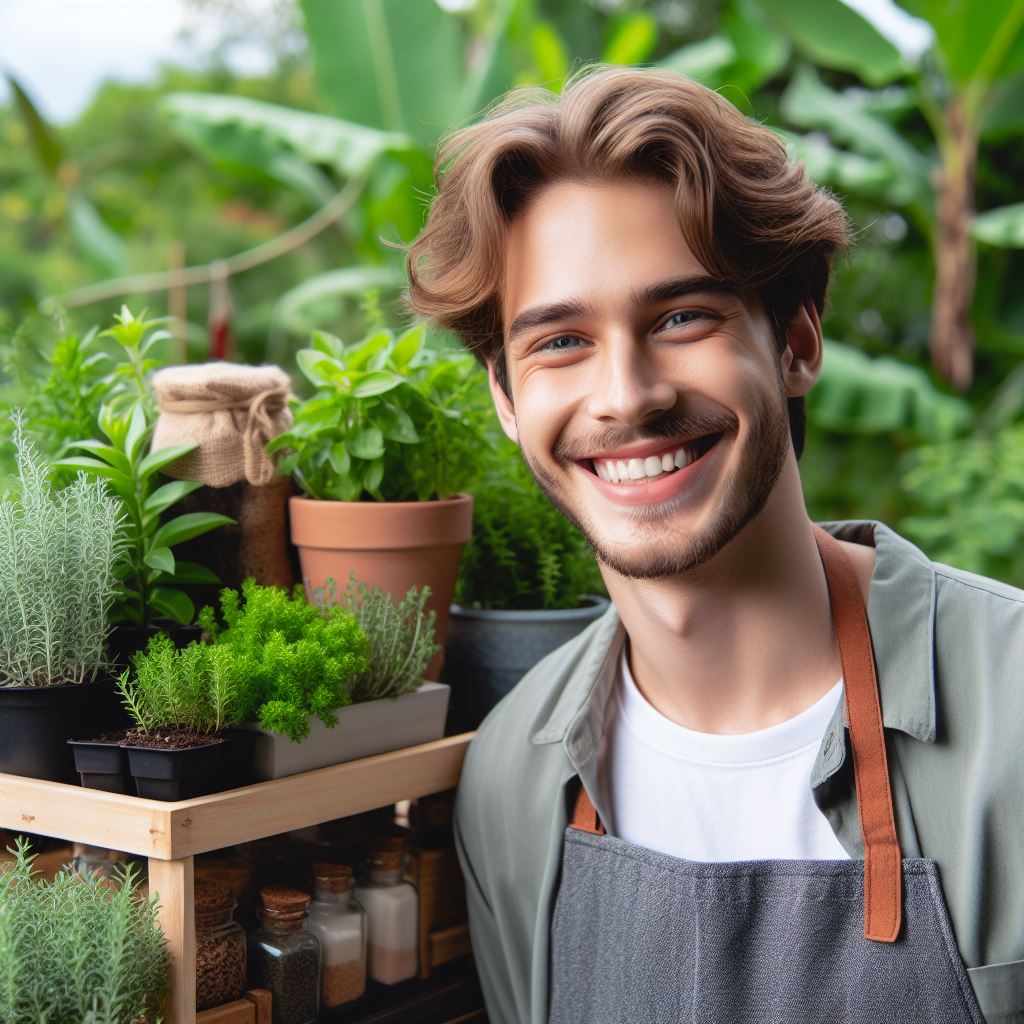
Selecting the Right Soil and Fertilizers
When it comes to container gardening, selecting the right soil and fertilizers is crucial for achieving a bountiful harvest.
Containers require specific soil and nutrient conditions to support plant growth and productivity.
In this section, we will discuss the importance of using high-quality potting soil, the need for organic matter and perlite, and provide recommendations on suitable fertilizers and their application frequency.
Importance of Using High-Quality Potting Soil
One of the key factors for successful container gardening is choosing high-quality potting soil.
Unlike traditional garden beds, containers have limited space and resources, making it essential to provide plants with nutrient-rich soil.
High-quality potting soil ensures that plants receive the necessary nutrients for healthy growth and development.
It is specifically formulated to provide adequate drainage and aeration, preventing issues like root rot.
Good potting soil also helps retain moisture around plant roots, reducing the frequency of watering required.
Additionally, it often contains organic matter that improves soil fertility, enhancing plant health and productivity.
Investing in high-quality potting soil is a wise choice for container gardeners who want to ensure their plants thrive in a confined space.
Adding Organic Matter and Perlite for Improved Drainage
In container gardening, drainage is critical for maintaining healthy plants.
As containers have limited drainage compared to traditional garden beds, it is necessary to enhance drainage capacity to avoid waterlogged roots.
Adding organic matter, such as compost or well-rotted manure, to potting soil improves its structure and promotes better water movement.
Another valuable addition to potting soil is perlite, a lightweight volcanic mineral.
Perlite helps increase soil porosity and prevent compaction, allowing excess water to drain away effectively.
This ensures that plant roots receive proper oxygen levels and reduces the risk of root diseases caused by excessive moisture.
Combining organic matter and perlite in the soil mixture contributes to improved drainage, leading to healthier plants in containers.
Recommendations on Suitable Fertilizers and Application Frequency
Container-grown plants rely on fertilizers for a continuous supply of essential nutrients.
Choosing the right fertilizers and applying them at the appropriate frequency is essential for the overall productivity and health of the plants.
Generally, slow-release fertilizers are a popular choice for containers as they provide a steady nutrient release over a more extended period.
When it comes to selecting fertilizers, opt for balanced ones with an equal ratio of nitrogen (N), phosphorus (P), and potassium (K).
This balanced nutrition helps promote overall plant growth, flowering, and fruiting.
Additionally, consider using organic fertilizers, which contribute to soil health and reduce the risk of chemical build-up over time.
The frequency of fertilizer application depends on the specific needs of the plants and the type of fertilizer.
As a general guideline, most container plants benefit from monthly fertilization during the growing season.
However, it is crucial to follow the instructions on the fertilizer packaging and adjust the frequency according to plant reactions.
Over-fertilization can lead to nutrient burn or damage to the plants.
In summary, selecting the right soil and fertilizers is vital for successful container gardening.
High-quality potting soil provides necessary nutrients, ensures proper drainage, and retains moisture.
Incorporating organic matter and perlite enhances soil structure and enhances water movement.
Choose suitable fertilizers with balanced nutrients, preferably organic, and apply them at the correct frequency to support healthy plant growth and maximize yields in containers.
Read: Small-Scale Farming: From Seed to Table
You Might Also Like: DIY Organic Pest Sprays for Gardens
Find Out More: Organic Fertilizers: Best Choices
Caring for Container Gardens
Regular Watering and Monitoring Moisture Levels
- When selecting plants for small spaces, it is important to choose compact and dwarf varieties.
- Compact plants take up less space, allowing you to grow more in a limited area.
- Dwarf varieties are also perfect for small gardens as they have smaller root systems, making them suitable for containers.
- These plant varieties are specially bred to thrive in confined spaces and still produce a bountiful harvest.
- By choosing compact and dwarf varieties, you can maximize your small space without compromising on productivity.
Suitability of vegetables, herbs, flowers, and fruits for container gardening
- Container gardening is a versatile option for growing various types of plants in small spaces.
- Vegetables like lettuce, peppers, and radishes can be grown successfully in containers.
- Herbs such as basil, thyme, and parsley are excellent choices for container gardening.
- Flowers like petunias, marigolds, and pansies can add beauty to your small space.
- Fruits like strawberries, blueberries, and dwarf citrus trees can also be grown in containers.
- Container gardening allows you to create a diverse and dynamic mini garden in any small space.
Specific examples of ideal plants for small spaces such as cherry tomatoes, salad greens, and herbs
- Cherry tomatoes are perfect for small spaces as they can be grown in compact pots or hanging baskets.
- Salad greens like lettuce, spinach, and arugula can be grown in shallow containers or troughs.
- Herbs such as mint, rosemary, and chives can thrive in small pots or vertical gardens.
- Strawberries are excellent candidates for container gardening and can be grown in hanging baskets.
- With careful selection, you can enjoy a variety of fruits, vegetables, herbs, and flowers in your small space.
In fact, selecting the ideal plants for small spaces is crucial for successful container gardening.
Emphasize the importance of choosing compact and dwarf varieties that can maximize productivity in limited areas.
Discuss the suitability of various plants including vegetables, herbs, flowers, and fruits, explaining how they can thrive in containers.
Provide specific examples like cherry tomatoes, salad greens, and herbs, highlighting their adaptability to small spaces.
By carefully selecting the right plants, you can create a flourishing container garden, no matter how small your space may be.
Showcase Your Farming Business
Publish your professional farming services profile on our blog for a one-time fee of $200 and reach a dedicated audience of farmers and agribusiness owners.
Publish Your ProfileHarvesting and Enjoying the Fruits of Your Labor
Guidance on identifying plant maturity and readiness for harvest.
- Check the color and texture of the produce. Mature vegetables tend to have vibrant colors and firm textures.
- Research the specific harvest time for each plant variety to ensure optimum flavor and nutritional value.
- Perform a taste test by sampling a small portion of the fruit or vegetable to determine its readiness.
- Observe the plant’s physical characteristics, such as the size and shape of the fruit, to determine maturity.
- Look for signs of ripeness, such as the fruit easily detaching from the plant or the vegetable reaching its full size.
Best practices for harvesting vegetables, herbs, and fruits.
- Use clean and sharp harvesting tools, such as garden shears or knives, to prevent damage to the plants.
- Harvest vegetables and herbs during the cooler parts of the day to preserve their freshness and flavor.
- Cut vegetables like lettuce and cabbage above the soil level, leaving the roots intact for regrowth.
- Gently tug or twist fruits to detach them from the plant, being careful not to bruise or damage the produce.
- Handle delicate herbs with care, plucking the leaves or stems individually to avoid excessive bruising.
Ideas for using the harvested produce in delicious recipes.
- Whip up a refreshing salad using freshly harvested lettuce, spinach, tomatoes, cucumbers, and a zesty dressing.
- Create a colorful vegetable stir-fry with an assortment of harvested peppers, mushrooms, carrots, and onions.
- Blend freshly harvested herbs like basil, parsley, and cilantro into flavorful pesto or salsa sauces.
- Showcase the flavors of ripe fruits by making a fruit salad or a homemade jam.
- Experiment with pickling or fermenting harvested vegetables to create unique and tangy side dishes.
- Bake delicious pies, tarts, or cobblers using freshly harvested fruits such as apples, berries, or peaches.
With proper plant maturity evaluation, skillful harvesting techniques, and creative culinary explorations, you can fully enjoy the fruits of your container gardening endeavors.
Happy harvesting and bon appétit!
Conclusion
Main points discussed in the blog post
Small spaces shouldn’t limit your gardening dreams.
In this section, we’ve explored the transformative power of container gardening.
From utilizing compact containers to maximizing vertical space, we’ve uncovered strategies to make the most of your limited area.
The key is to select versatile crops that thrive in containers, ensuring a variety of fresh produce at your fingertips.
Smart planting techniques further enhance productivity.
Start your own container garden and experience the joy of big harvests in small spaces
Now that you’ve learned the secrets of small space gardening, it’s time to take action.
Start your container garden and witness the joy of big harvests in even the tiniest of spaces.
Embrace the opportunity to cultivate your own oasis of greenery and flavors. Whether you have a balcony, patio, or just a small corner, there’s room for a thriving garden.
Seize the chance to connect with nature, enjoy the satisfaction of growing your own food, and savor the delicious rewards of your efforts.
Your small space can become a haven of abundance – get started today!

